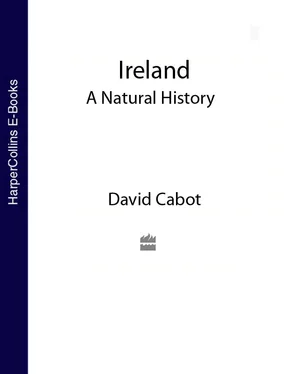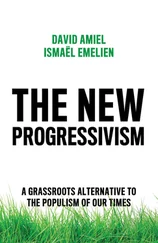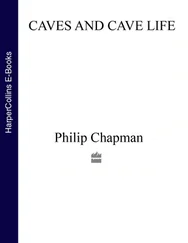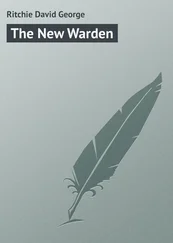1 ...7 8 9 11 12 13 ...39 Soon after the adoption of the Linnean system some interesting early botanical investigations were undertaken by Patrick Browne (1720–90), from Woodstock, Co. Mayo, who attended Leyden University and became friendly with Linnaeus. He settled in Jamaica, practised as a medical doctor, and wrote The Civil and Natural History of Jamaica. 50His important manuscript, Fasciculus Plantarum Hiberniae , containing records of his botanical findings during 1788, made principally in Mayo (although he also investigated Co. Galway), lay dormant for about two centuries in the cupboards of the Linnean Society, London, before being published in 1996 as The Flowers of Mayo together with a commentary and extensive notes by Nelson and illustrations by Walsh. 51Browne also published important catalogues of the birds and fishes of Ireland in the Gentleman’s and London Magazine in 1774. 52,53
Despite the advent of regional natural histories, Ireland still lagged behind in scientific matters. Progress was, of course, impeded by a lack of wealth, a poor institutional infrastructure, and often hazardous and difficult travel through the countryside. But towards the close of the century things were warming up in Dublin. One driving force behind the foundation of the National Botanic Gardens, Glasnevin, in 1795 was Walter Wade (fl.1770?–1825) who, a year earlier, had published Catalogus Systematicus Plantarum Indigenarum in Comitatu Dublinensi Inventarum. Pars Prima – a flora of Co. Dublin, the first Irish flora to be arranged according to the Linnean classification. 54Wade insisted on personally viewing each species before listing it. He also wrote several other texts including one on rare plants in Co. Galway, with a particular emphasis on Connemara, and he claimed to be the first serious visiting botanist there. His subsequent Plantae Rariores in Hibernia Inventae (1804) was a more ambitious cataloguing of flowering plants, including 55 new additions to his Dublin flora. 55Interest was now spreading beyond flowering plants, a point highlighted by the appearance in 1804 of Dawson Turner’s (1775–1858) Muscologiae Hibernicae Spicilegium , 56entirely devoted to the mosses of Ireland, all of which had either been seen by him growing in situ or had been sent to him by Irish correspondents including John Templeton from Cranmore, near Belfast, one of Ireland’s outstanding naturalists.
The now flourishing Royal Dublin Society was encouraging economic development of the country through agricultural improvement. Naturalists and scientists rose to the occasion. John White (d. before 1845), one of the gardeners to the Society, published An Essay on the Indigenous Grasses of Ireland in 1808. 57Wade came forward with Sketch of Lectures on Meadow and Pasture Grasses , 58which he delivered in Glasnevin at the beginning of the nineteenth century. William Richardson (1740–1820), rector of Moy and Clonfeacle, Co. Antrim, and a writer on geology and agriculture, engaged in a vigorous and eccentric campaign to promote creeping bent grass and brought out a Memoir on Fiorin Grass, published in 1808 as a Select Paper of the Belfast Literary Society. Another utilitarian natural history contribution was Wade’s most substantial book: Salices or an Essay towards a General History of Sallows, Willows & Osiers, their Uses and Best Methods of Propagating and Cultivating Them (1811). 59
The scientific study of botany came of age before that of zoology. Plants were not elusive; they stayed put and lent themselves to scrutiny, whereas animals were much more difficult to observe, so botanical discoveries were continuing at an even pace. Belfastman John Templeton, (1766–1825) who furthered the cause of Irish botany more than any other, and was described by Praeger as the most eminent naturalist that Ireland ever produced, completed his manuscript Catalogue of the Native Plants of Ireland in 1801 – now in the Royal Irish Academy, Dublin. Unfortunately, he failed to realise his ambition of producing an elaborate Hibernian Flora that would have drawn from his Catalogue and embodied new records together with colour illustrations. The remaining manuscript, including some fine watercolour drawings by Templeton himself, is little more than a skeleton with some volumes now missing. It resides in the Ulster Museum, Belfast.
Templeton was quite content to live in Northern Ireland, working diligently on both the flora and fauna, with little ambition to travel abroad despite a tempting offer from the British botanist Sir Joseph Banks to go to New Holland (Australia), ‘with a good salary and a large grant of land’. 2Templeton published very little but maintained an active correspondence with many eminent British naturalists such as William Hooker, Dawson Turner, James Sowerby and Lewis Dillwyn (who also visited Ireland), many of whom published his records.
The first national flora was The Irish Flora Comprising the Phaenogramous Plants and Ferns , published anonymously in 1833. 60Katherine Sophia Baily (1811–86), later Lady Kane and wife of Sir Robert Kane, was the reputed author at the tender age of 22. John White of the National Botanic Gardens is acknowledged in the preface as having supplied the localities for plants. Three years later James Townsend Mackay (1775?—1862), a Scot who had been appointed Curator of the Trinity College Botanic Garden at Ball’s Bridge in 1806, brought forth Flora Hibernica , 61a much more substantial and scholarly work which ambitiously encompassed both phanerogams (seed-bearing plants) and cryptogams (those that do not produce seeds) of the entire island in one work. The book was a joint effort, despite no acknowledgement on the title page – the other contributors are acknowledged later in the text – between William Henry Harvey (1811–66) who was responsible for the section on algae and Thomas Taylor (d.1848) who wrote the sections on mosses, liverworts and lichens while Mackay dealt with the flowering plants, ferns and stoneworts.
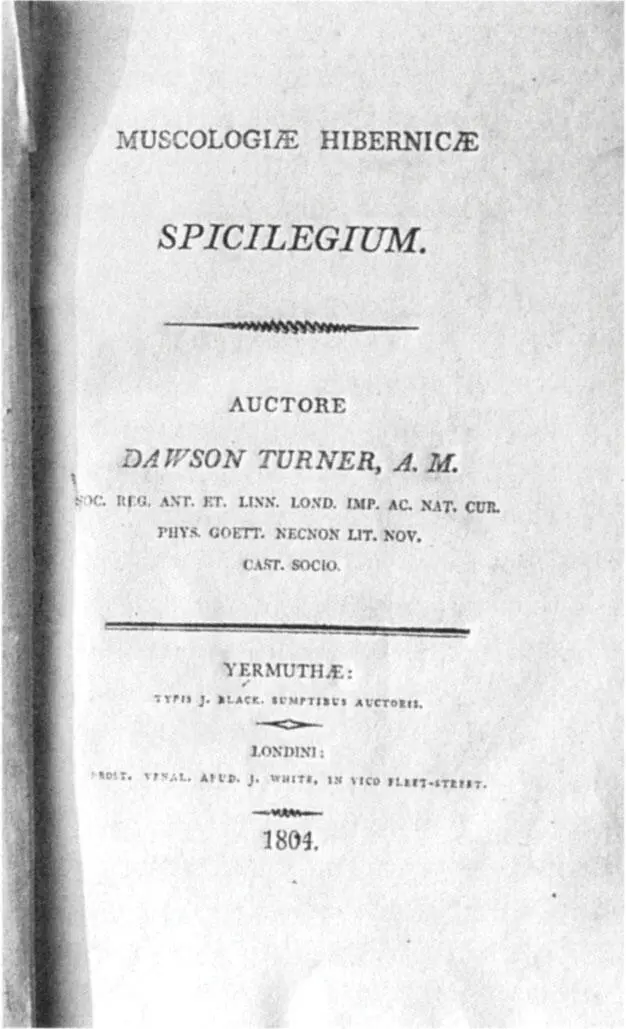
Turner’s Muscologiae Hibernicae (1804). Although originating from England the book is well grounded on Irish data.
One of the few specially illustrated title pages for Baily’s Irish Flora (1833).
The British Association for the Advancement of Science, founded in 1831, was based, in the words of social historian David Allen, ‘ostensibly on the model of a similar perambulatory body started nine years before in Germany’. Apart from providing the natural history world as a whole with a usual annual meeting ground and forum, the B.A. helped these studies in a more practical way by making grants-in-aid. 62The B.A. provided enormous stimulus to the development of regional and local natural histories by holding its regional meetings throughout Britain and Ireland. The 1843 Association meeting was held in Cork and to mark the event the Cuvierian Society of Cork published a small volume of ‘communications’ entitled Contributions Towards a Fauna and Flora of the County of Cork. 63John D. Humphreys (fl. 1843) prepared the lists of molluscs, crustaceans and echinoderms; J.R. Harvey (fl. 1843) wrote on the vertebrates while Thomas Power (fl. 1845) was responsible for the section ‘The Botanist’s Guide for the County of Cork’ – one of the first local floras in Ireland.
Twenty years after the publication of the Cork regional flora came Flora Belfastiensis in 1863. 64Its author, Ralph Tate (1840–1901), hoped that it might be of use to the botanical members of the Belfast Naturalists’ Field Club which had been founded as an enthusiastic response to his series of lectures delivered at the Belfast School of Science. Tate, born in Britain, was only resident in Belfast for three years after which he travelled widely, ending up as Professor of geology at Adelaide, Australia. Another similar product was the small, slim volume A Flora of Ulster, 65published the following year by George Dickie (1812–82), and offered as a ‘Collectanea’ towards a more comprehensive flora of the North of Ireland. Dickie’s view of Ulster was definitely expansionist for he included parts of Connacht in the surveyed localities. Both Flora Belfastiensis and A Flora of Ulster consisted of a list of species accompanied with notes on their habitats and distribution.
Читать дальше
